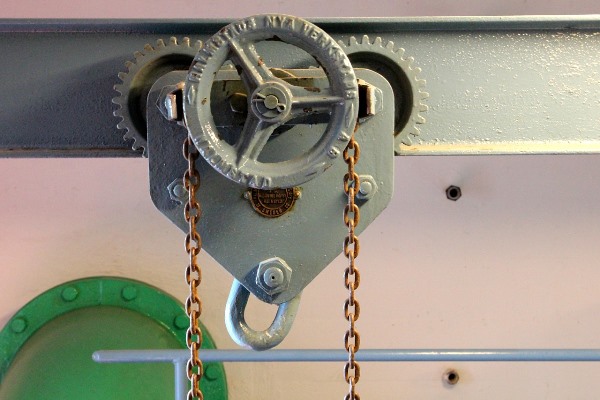Using Small Hoists Safely

Small hoists are utilized in many ways to assist us in lifting and moving heavy objects. They can be a powerful tool to help us work safely, but they can also be very dangerous if in bad condition or utilized incorrectly.
Here are some important things to look at when you use a hoist:
Before loading, operators make sure:
- Loads are within equipment's rated capacity. Each hoist is marked with a capacity.
- Check the hoist’s chains or wire rope to ensure they aren’t frayed, kinked, stretched or damaged in other ways
- Make sure the slings are in good shape. Look for tears in the webbing, loose stitching and frays.
- Make sure the hook is in good shape. Ensure the spring loaded safety latch is in place on the hook. Ensure the hook isn’t bent.
- If using a cross member – the hooks are directly over the lifting point of the object.
- The hook moves directly over the load's center, without swinging
- Any sharp edges on the load are padded so as not to cause wear and tear on parts of the hoist or slings.
- Check to ensure you have a clear path for the lift. Remove any objects that could get in the load’s or your way.
When loading, operators make sure:
- The sling sits squarely in the hook bowl and then attaches to the load.
- The chain or rope has no kinks or twists and doesn't wrap the load.
- The hoist is attached to best balance out awkward or unevenly weighted items.
Before lifting and moving, operators make sure:
- No person or obstruction is on or under the load or hooks, or in its path.
Beginning the lift
- Lift the load horizontally only at first
- Lift the load slowly at first to ensure the load is balanced and will not tip or swing during the operation.
- Ensure your path is clear to the destination.
While lifting and moving, make sure:
- The load is high enough to clear the ground and obstacles but not raised higher than necessary.
- No one is allowed under the load.
- Move the load horizontally very slowly to prevent the load from swinging.
- Only move in one direction at a time. Either move the load vertically or horizontally, but not both at the same time.
Ending the Lift
- Slowly lower the load.
- Make sure the load is all the way down and not suspended in any way by the lift.
- Make sure there is no tension left on any slings or other devices used.
- Carefully remove any slings or other accessories utilized during the operation.
- Return the hoist to the home position.
Loadmate replied the topic: #616
Yes, really useful and also information regarding safe use hoist. we are also publish post regarding hoist & trolley safety tips: www.loadmate.in/blog/hoist-trolley-safety-tips/
